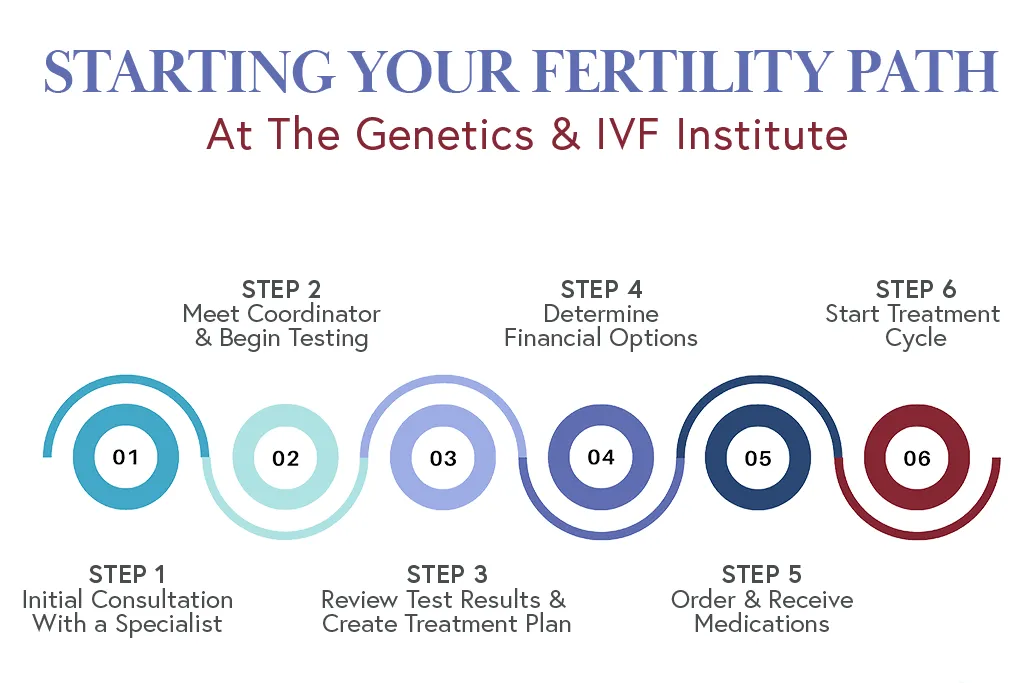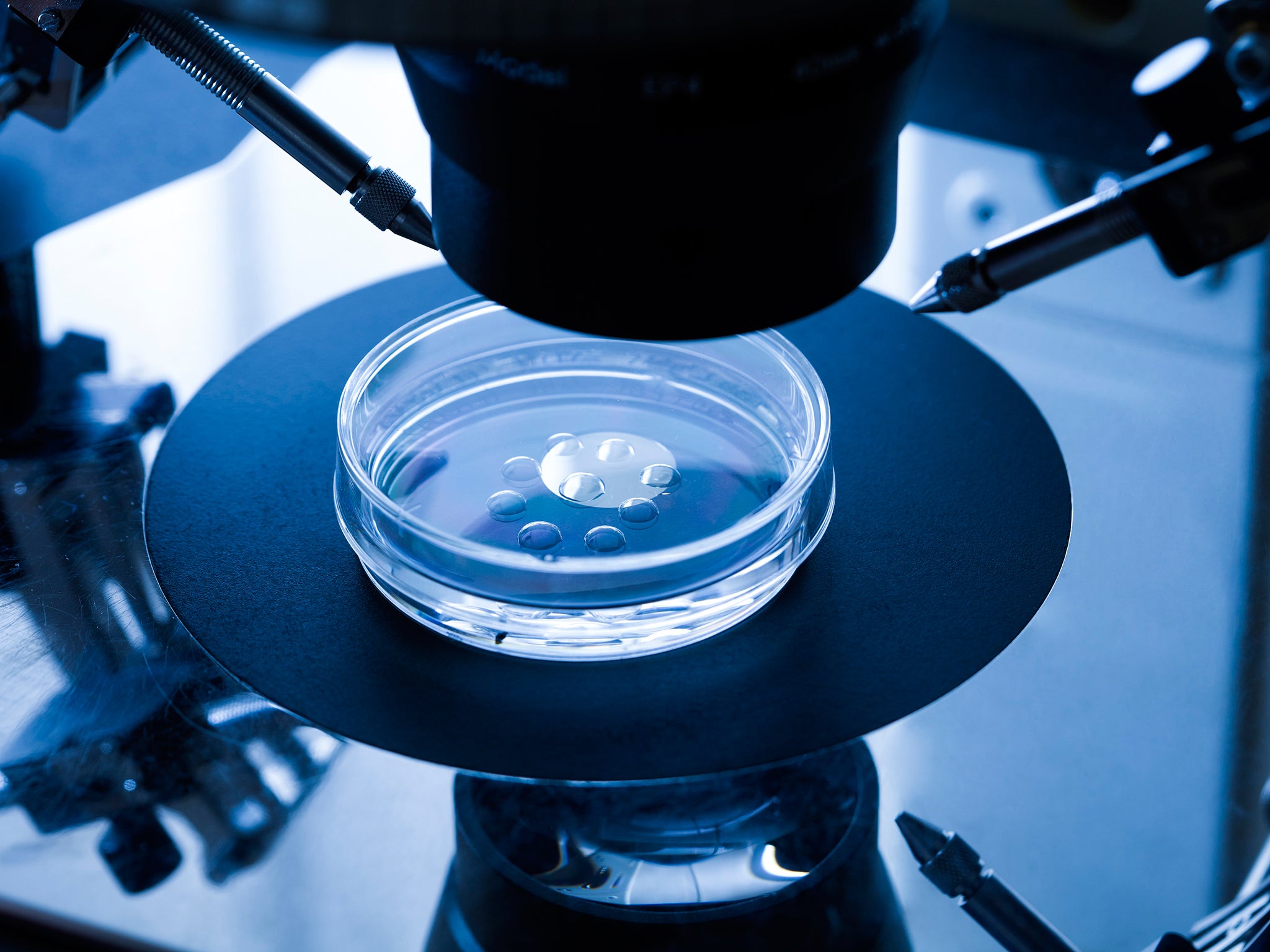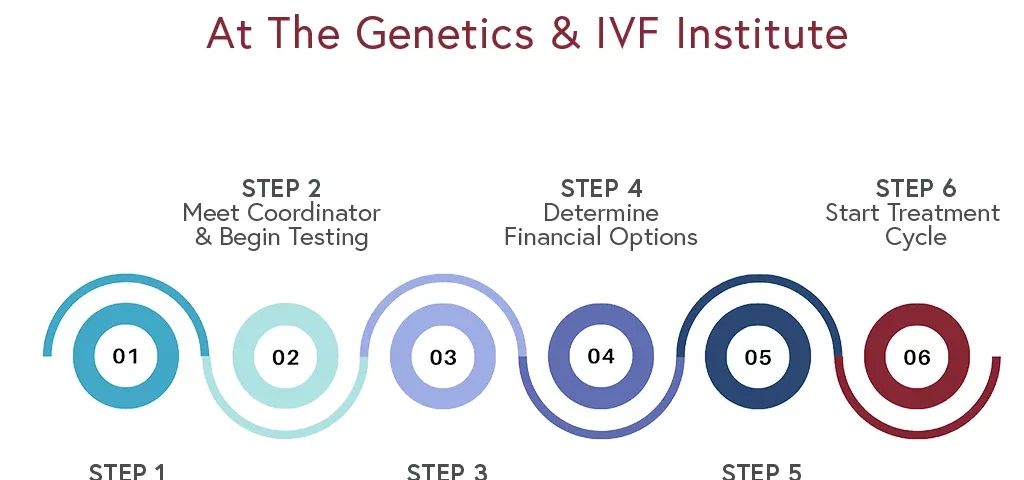
Can You Choose Your Baby’s Gender with IVF?
April 9, 2025Unveiling the World of Genetics and IVF Institute Funding: What You Didn’t Know
When you hear about the Genetics & IVF Institute (GIVF), you might picture a high-tech lab filled with scientists in white coats helping families grow. But there’s so much more to this story—especially when it comes to how it’s funded. Funding isn’t just about money; it’s about dreams, breakthroughs, and even some surprising secrets behind the scenes. Let’s dive into the fascinating world of GIVF funding, explore what keeps this place running, and uncover details that’ll make you see fertility science in a whole new light.

What Is the Genetics & IVF Institute, Anyway?
The Genetics & IVF Institute, or GIVF for short, isn’t your average medical center. Founded way back in 1984 by Dr. Joseph Schulman, it was the first outpatient IVF (in vitro fertilization) clinic in the U.S. That’s right—before GIVF, if you needed IVF, you were stuck in a hospital. Today, it’s a global name, helping people have babies with cutting-edge tech and running one of the world’s biggest sperm and egg banks. But how does a place like this stay afloat? Spoiler: It’s not all government grants and charity bake sales.
Why Funding Matters Here
Think of funding as the fuel in GIVF’s engine. Without it, there’d be no fancy equipment, no expert staff, and no chance to help thousands of families every year. Funding covers everything from research on new fertility tricks to freezing eggs for future parents. It’s the backbone of every test tube baby born through their doors.
A Peek at Their Reach
GIVF isn’t just a local hero. They’ve got branches in places like China and Mexico, and their Fairfax Cryobank ships donor sperm to over 50 countries. That kind of global impact takes serious cash—and some creative funding ideas we’ll uncover soon.
Where Does the Money Come From?
You might think a place like GIVF runs on big donations or taxpayer dollars, but the truth is way more interesting. Their funding is a mix of private cash, patient fees, and some unexpected partnerships. Let’s break it down.
Patient Fees: The Everyday Backbone
Most of GIVF’s day-to-day cash comes from the people walking through their doors. IVF isn’t cheap—think $20,000 or more per cycle—and that’s before extras like genetic testing or donor eggs. For a lot of families, it’s worth every penny, and those fees keep the lights on.
- Fun Fact: A single IVF cycle at GIVF can cost about $25,950 for three tries if you’re under 42. Add in meds and testing, and you’re looking at a big investment.
- Why It Works: Patients are willing to pay because GIVF has a reputation for success—and a track record of firsts, like America’s first frozen embryo twins.
Private Investors: The Big Players
Here’s where it gets juicy. In 2024, GIVF was scooped up by Amulet Capital Partners, a private equity firm that loves healthcare bets. These investors aren’t just throwing money around—they’re banking on GIVF’s growth, especially in the booming fertility market.
- What’s in It for Them: Investors see dollar signs in the rising demand for IVF. More people are waiting longer to have kids, and fertility tech is hotter than ever.
- Secret Perk: Private funding means GIVF can splurge on new tech without begging for grants. Think robots sorting sperm or AI picking the best embryos.
Donor Banks: A Hidden Goldmine
GIVF owns Fairfax Cryobank and Fairfax EggBank—two of the biggest donor banks out there. Selling sperm and eggs isn’t just a service; it’s a cash cow. Clinics and patients worldwide buy from them, raking in steady profits.
- Cool Tidbit: Fewer than 1% of sperm donor applicants make the cut at Fairfax Cryobank. That exclusivity keeps prices high and quality top-notch.
- Numbers Game: With shipments to over 50 countries, this side hustle could bring in millions yearly.
Partnerships and Ventures
GIVF isn’t a lone wolf. They’ve teamed up with places like Fudan University in China to open Shanghai Ji Ai, a massive fertility clinic. These joint ventures spread costs and boost income, all while expanding their global footprint.
- Why It’s Smart: Sharing resources with partners cuts down on expenses and opens new markets—like the growing demand for IVF in Asia.
The Surprising Ways Funding Shapes GIVF’s Work
Money doesn’t just pay the bills—it decides what GIVF can do. From groundbreaking research to quirky side projects, funding calls the shots. Here’s how.
Research That Changes Lives
Ever wonder how GIVF stays ahead of the curve? Funding fuels their research, like figuring out how to freeze eggs better or spot genetic issues before a baby’s born. Back in the ‘80s, they pioneered ultrasound-guided egg retrieval—no surgery needed. That kind of innovation takes cash.
- Latest Buzz: Recent studies hint at using AI to predict IVF success rates. GIVF’s likely testing this now, thanks to investor dollars.
- Expert Insight: “Funding lets us push boundaries others can’t,” says Dr. Laurence Udoff, a GIVF fertility specialist. “It’s why we’re first so often.”
Helping More People
With private money, GIVF can offer discounts or multi-cycle packages to families who couldn’t otherwise afford IVF. It’s not charity—it’s smart business that builds loyalty.
- Real Example: Their $25,950 multi-cycle deal is a lifeline for couples facing multiple tries. Funding makes that possible.
The Weird Stuff They’ve Tried
Not all funding goes to serious science. GIVF once experimented with preimplantation genetic testing (PGT) to prevent Huntington’s disease—a rare move back then. They’ve also dabbled in sex selection tech, sparking debates but showing off their range.
- Fan Favorite: Some patients love that GIVF offers options others won’t touch. It’s a niche that keeps them in the spotlight.
What’s Hot in GIVF Funding Right Now?
The fertility world’s always changing, and GIVF’s funding game is evolving too. Here’s what’s making waves as of March 2025.
The Investor Boom
Private equity’s all over fertility clinics lately, and GIVF’s no exception. Amulet Capital’s 2024 buyout is part of a trend—big money sees big potential in baby-making tech.
- Why Now: People are having kids later, and IVF demand’s up 10% yearly. Investors want in before it explodes even more.
- Prediction: Look for more buyouts as firms chase the $25 billion fertility market.
Crowdfunding Craze
Here’s a twist: Some GIVF patients are crowdfunding their treatments. Sites like GoFundMe are packed with stories of couples raising $10,000+ for IVF. GIVF doesn’t fund this directly, but it’s a sign of how desperate—and creative—people are getting.
- Tip: If you’re considering this, share a personal story. Donors love a good tale over a generic plea.
Grants for the Future
While GIVF leans on private cash, they’ve snagged research grants too. Think National Institutes of Health (NIH) money for genetic studies. It’s not their main gig, but it keeps them in the science game.
- Latest Data: A 2023 NIH study on IVF outcomes cited GIVF’s work, hinting at grant ties.
The Secrets Fans Want to Know
GIVF’s funding isn’t just numbers—it’s a treasure trove of behind-the-scenes goodies. Here’s what’s got people buzzing.
The VIP Donors
Rumor has it, some Fairfax Cryobank donors are celebs or athletes. Funding keeps their identities hush-hush, but the idea of “super sperm” has fans obsessed.
- Fan Question: “Could my kid have Brad Pitt’s genes?” Probably not, but the mystery’s half the fun.
Dr. Schulman’s Hobbies
Founder Joseph Schulman isn’t just a brainiac—he’s a history buff who once wanted to be an archaeologist. His love for digging up the past mirrors how he built GIVF from scratch with private loans and grit.
- Why It Matters: That scrappy spirit still drives GIVF’s funding hustle today.
The Cryobank Vault
Picture this: a top-secret freezer in Fairfax, Virginia, holding thousands of sperm and egg samples. Funding keeps it at -196°C, and staff joke it’s like a sci-fi movie set. Fans eat up these tidbits.
- Cool Fact: One power outage could cost millions—funding’s why that never happens.
Challenges GIVF Funding Faces
Money’s great, but it’s not all smooth sailing. GIVF’s funding hits some bumps—here’s what they’re up against.
Sky-High Costs
IVF tech isn’t cheap. A single next-gen sequencing machine for genetic testing can run $100,000. Funding has to stretch to cover that, plus staff and global shipping.
- Fix It: Partnerships help, but rising costs could squeeze profits.
Insurance Woes
Most U.S. insurance plans don’t cover IVF, leaving patients—and GIVF—scrambling. Funding from investors fills the gap, but it’s a shaky tightrope.
- Stat: Only 19 states mandate some fertility coverage as of 2025. That’s a problem for GIVF’s bottom line.
Ethical Hot Potatoes
Some folks question donor banks or genetic screening. Funding these projects can spark backlash, making investors nervous.
- Example: Sex selection tech draws critics who call it “playing God.” GIVF’s funding has to weather that storm.
How You Can Tap Into GIVF’s World
Want to use GIVF’s services or just curious how funding affects you? Here’s your playbook.
Affording IVF at GIVF
IVF’s pricey, but GIVF’s funding setup offers options. Here’s how to make it work:
- Check Packages: That $25,950 multi-cycle deal? Ask about it. It’s a funding perk for patients.
- Crowdfund Smart: Share your story online—emotional hooks get more clicks.
- Loan Up: GIVF partners with lenders. A quick consult can hook you up.
- ✔️ Do: Save up for meds—they’re not in the package.
- ❌ Don’t: Assume insurance will help—check first.
Becoming a Donor
Fancy funding GIVF from the inside? Donating sperm or eggs pays—and helps others. Fairfax Cryobank’s picky, but here’s the scoop:
- Requirements: 19-39 years old, healthy, no major genetic issues.
- Payoff: Sperm donors can earn $100 per sample; egg donors get $8,000+ per cycle.
- Catch: It’s a time commitment—think months of screening.
Following the Research
Love science? GIVF’s funding means new studies all the time. Follow their site or X for updates on breakthroughs like AI in IVF.
- Hot Tip: Look for terms like “PGT” (preimplantation genetic testing) or “vitrification” (egg freezing)—that’s where the action is.
The Future of GIVF Funding: What’s Next?
Where’s GIVF headed with all this cash? Let’s gaze into the crystal ball.
Tech Takeover
Investors are betting on tech like microfluidics—tiny devices that handle sperm and eggs better. GIVF’s likely pouring funds into this now.
- Why It’s Cool: It could cut costs and boost success rates by 15%, per 2022 studies.
Global Growth
With partners in Asia and beyond, GIVF’s funding will push more clinics worldwide. Think India or Brazil next.
- Expert Take: “The future’s in emerging markets,” says fertility analyst Dr. Sarah Thompson. “GIVF’s funding is paving the way.”
Affordable IVF?
Some whisper GIVF might use funding to lower prices. Imagine IVF at $10,000 a pop—game-changing, right?
- Hopeful Sign: Their multi-cycle deals hint at this trend.

Busting Myths About GIVF Funding
There’s tons of chatter about how GIVF’s funded. Let’s clear the air.
Myth 1: It’s All Government Money
Nope! GIVF’s mostly private—patient fees and investors rule the roost. Grants are just a bonus.
Myth 2: Donors Fund Everything
Donor banks help, but they’re not the whole story. Patient cash and equity deals are bigger players.
Myth 3: They’re Rolling in Cash
They make money, sure, but costs are wild. Funding’s a tight balancing act.
Why GIVF Funding Fascinates Us
At its core, GIVF’s funding isn’t just about dollars—it’s about hope, science, and a little bit of magic. It’s the unsung hero behind every baby pic their patients post. And with quirks like celeb donors and sci-fi freezers, it’s a story that hooks us all.
The Human Side
Every dollar funds a family’s dream. That’s why fans dig into this stuff—it’s personal.
The Wow Factor
From firsts like frozen embryo twins to global sperm shipping, GIVF’s funding makes jaw-dropping moments happen.
Let’s Talk: Your Turn!
Funding’s a big deal at GIVF, and we’ve only scratched the surface. What do you think? Got a funding question or a wild GIVF story? Drop it below! Let’s keep this convo going—your take could spark the next big idea.
- Quick Poll: What’s most surprising about GIVF’s funding to you? Private investors, donor banks, or something else? Vote and tell us why!
